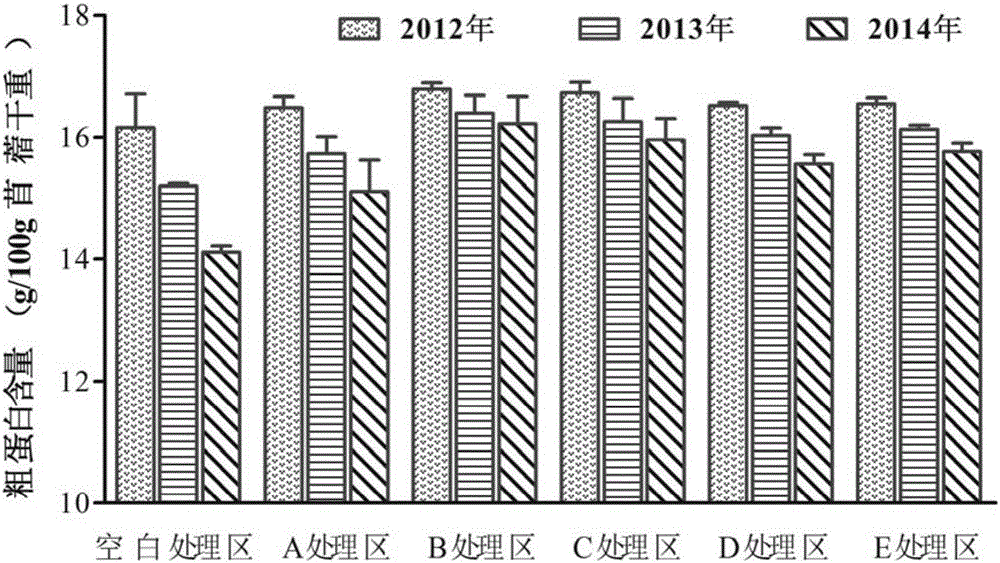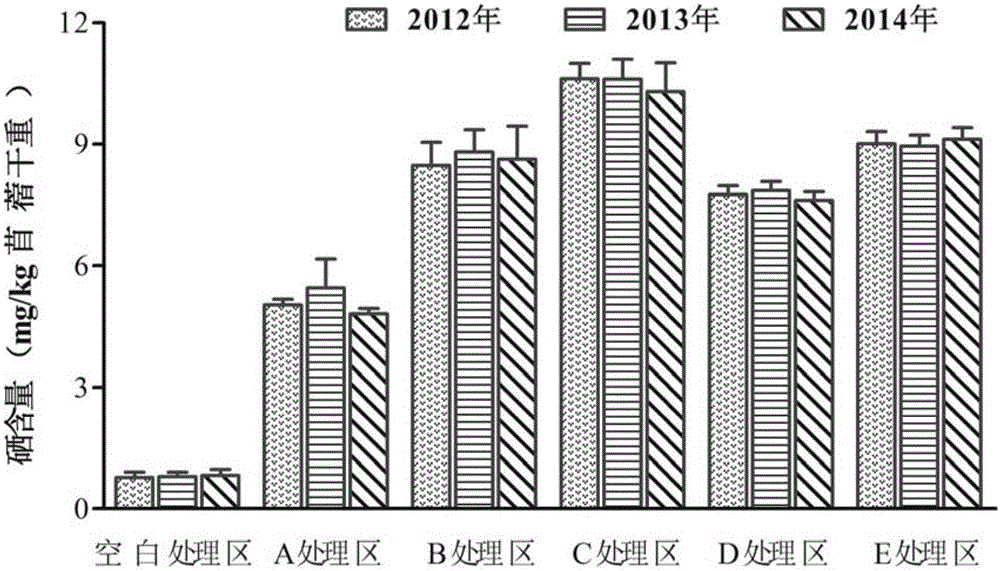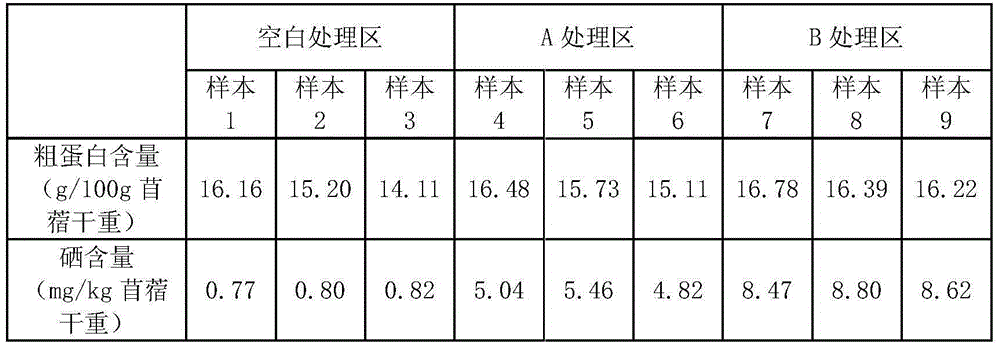Plant growth regulator and application thereof
A plant growth regulator, a technology for growth regulators, applied in the directions of plant growth regulators, plant growth regulators, applications, etc., can solve the problems of decreased crude protein content, quality decline, low soil moisture content, etc., to improve the selenium content. , the effect of delaying the decline of crude protein content
- Summary
- Abstract
- Description
- Claims
- Application Information
AI Technical Summary
Problems solved by technology
Method used
Image
Examples
Embodiment 1
[0055] Embodiment 1, the preparation of growth regulator composition
[0056] This example provides five growth regulators, namely growth regulator A, growth regulator B, growth regulator C, growth regulator D and growth regulator E.
[0057] Add 50 g of sodium selenite pentahydrate and 12 kg of selenium-enriched yeast powder into 1250 kg of water, fully dissolve and mix to prepare the growth regulator A. In the growth regulator A, the concentration of inorganic selenium is 12 mg / L, and the concentration of organic selenium is 48 mg / L. In the growth regulator A, the mass ratio of sodium selenite pentahydrate, selenium-enriched yeast powder and water is 0.05:12:1250.
[0058] Add 100g of sodium selenite pentahydrate and 24kg of selenium-enriched yeast powder into 1250kg of water, fully dissolve and mix to prepare growth regulator B. In the growth regulator B, the concentration of inorganic selenium is 24 mg / L, and the concentration of organic selenium is 96 mg / L. In the grow...
Embodiment 2
[0062] Embodiment 2, the influence of different growth regulators on crude protein content and selenium content of alfalfa aerial parts
[0063] The field experiment was carried out on a multi-year alfalfa fertilization experimental plot in Duolun County, Xilingol League, Inner Mongolia Autonomous Region. The experimental design method of the influence of different growth regulator compositions on the crude protein content of the aerial parts of alfalfa is as follows: the experiment adopts random block design, 3 repeated areas are set, and 6 treatment areas are randomly set in each repeated area, which are respectively blank treatment areas , A treatment area, B treatment area, C treatment area, D treatment area and E treatment area. The area of each treatment area is 40m 2 .
[0064] Field management: Dry farming was adopted throughout the experiment, that is, no irrigation was carried out. Beginning in 2012, mow once a year in mid-August to collect forage grass. In the...
PUM
 Login to View More
Login to View More Abstract
Description
Claims
Application Information
 Login to View More
Login to View More - R&D
- Intellectual Property
- Life Sciences
- Materials
- Tech Scout
- Unparalleled Data Quality
- Higher Quality Content
- 60% Fewer Hallucinations
Browse by: Latest US Patents, China's latest patents, Technical Efficacy Thesaurus, Application Domain, Technology Topic, Popular Technical Reports.
© 2025 PatSnap. All rights reserved.Legal|Privacy policy|Modern Slavery Act Transparency Statement|Sitemap|About US| Contact US: help@patsnap.com



